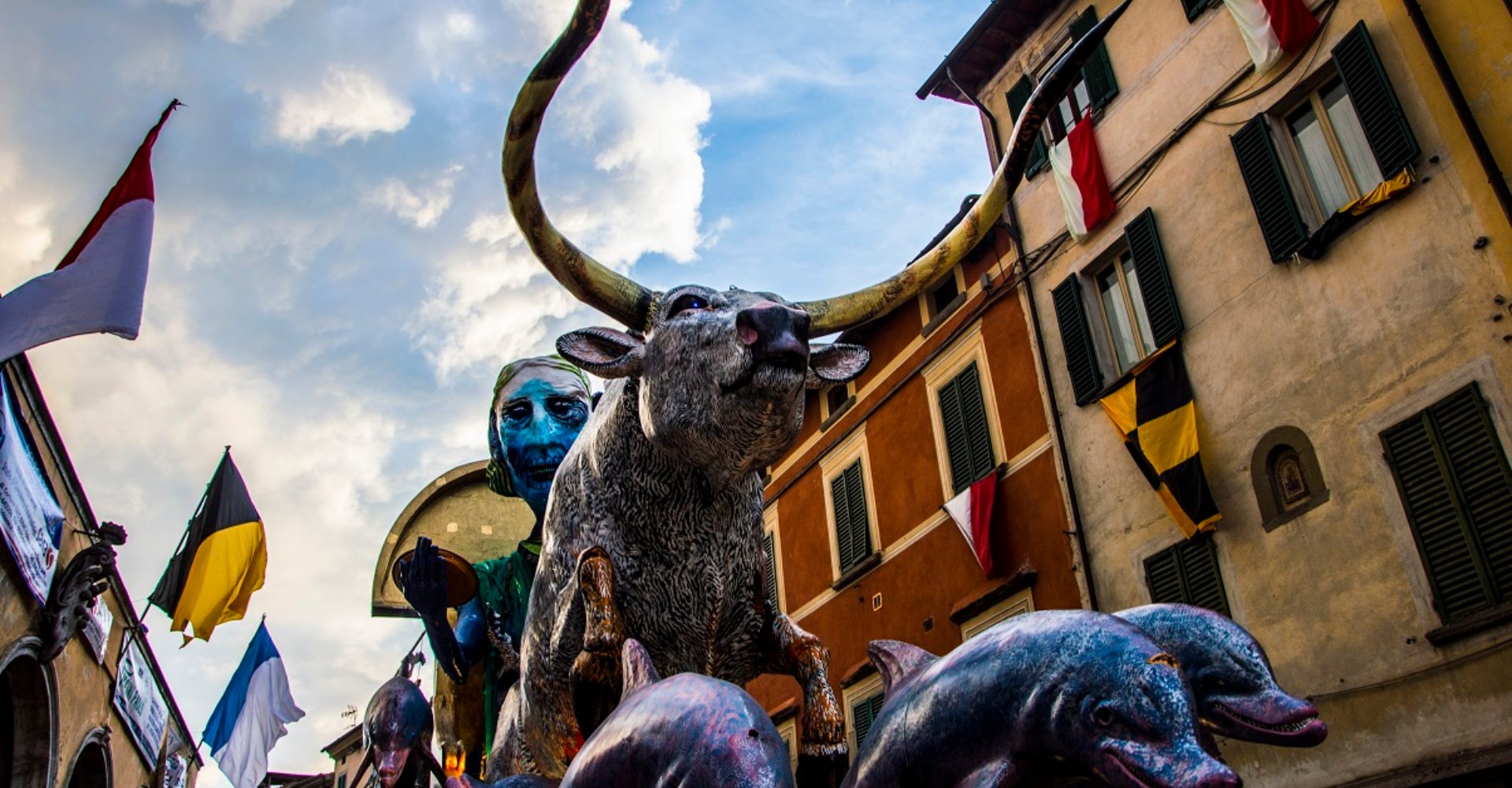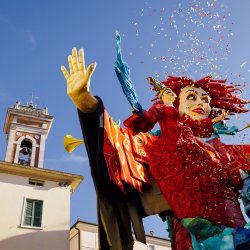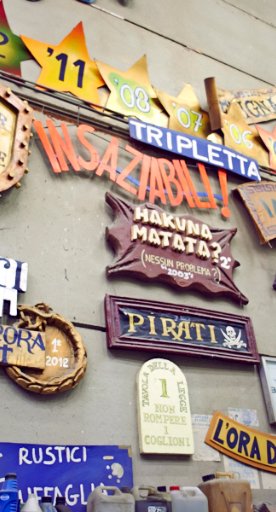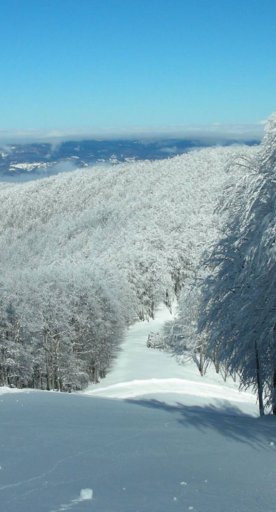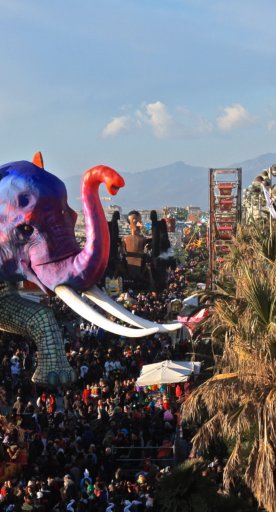Foiano della Chiana
Important Renaissance works alongside the famous carnival
Foiano is located in Valdichiana, an area full of hills and the distinctive flavours of its typical dishes. With the reddish colours of its terracotta buildings, the town is a small, deeply historic gem, drenched in Etruscan and Roman history. Foiano was even illustrated by Giorgio Vasari when he depicted the Battle of Scannagallo, fought in 1554 between the French-Sienese troops and the Spanish-Medicean army, in a fresco inside the Hall of the 500 at Palazzo Vecchio in Florence.
What to see in Foiano della Chiana
Various important figures are tied to Foiano della Chiano, especially skilled artists who fortunately left important artworks in this area. The town’s churches are particularly surprising; although some may be simple on the outside, inside are concealed incredible surprises. The Church of Sant’Eufemia is home to the brilliant Madonnas made by the Della Robbia workshop, who also made works for the churches of San Francesco and San Michele Arcangelo (also known as San Domenico), in which a fresco dedicated to the Adoration of the Magi has recently been restored. There is also a heavy emphasis on painting here: just head to the Collegiate Church of San Martino, where you can see the impressive depiction of the Coronation of the Virgin by Luca Signorelli and a painting by Pomarancio.
Piazza Cavour is the highest point in the town and is therefore known to the locals as “Piazz’Alta”. It’s reached by climbing some stairs that pass under the distinctive Civic Tower’s arch. Right in the heart of the piazza is the Palazzo delle Logge, a 16th century Medici hunting lodge which is now home to the Municipal Library, as well as the Palazzo Pretorio (the historic residence of the Podestà which today acts as the Municipality of Foiano’s headquarters).
Various important figures are tied to Foiano della Chiano, especially skilled artists who fortunately left important artworks in this area. The town’s churches are particularly surprising; although some may be simple on the outside, inside are concealed incredible surprises. The Church of Sant’Eufemia is home to the brilliant Madonnas made by the Della Robbia workshop, who also made works for the churches of San Francesco and San Michele Arcangelo (also known as San Domenico), in which a fresco dedicated to the Adoration of the Magi has recently been restored. There is also a heavy emphasis on painting here: just head to the Collegiate Church of San Martino, where you can see the impressive depiction of the Coronation of the Virgin by Luca Signorelli and a painting by Pomarancio.
Piazza Cavour is the highest point in the town and is therefore known to the locals as “Piazz’Alta”. It’s reached by climbing some stairs that pass under the distinctive Civic Tower’s arch. Right in the heart of the piazza is the Palazzo delle Logge, a 16th century Medici hunting lodge which is now home to the Municipal Library, as well as the Palazzo Pretorio (the historic residence of the Podestà which today acts as the Municipality of Foiano’s headquarters).
Nearby
Foiano is the perfect base to travel around the Valdichiana area, perhaps taking a bicycle route along the Bonifica Trail which connects the city of Arezzo to Chiusi.
A few kilometres from Foiano della Chiana is the small town of Lucignano. The village represents one of the most interesting examples of a medieval urban centre due to its elliptical structure with concentric rings. Cortona is another unmissable, breathtakingly picturesque village thanks to its typically medieval architecture consisting of historic palaces, narrow and cobbled alleys, small artisan workshops and typical Tuscan restaurants.
Foiano is the perfect base to travel around the Valdichiana area, perhaps taking a bicycle route along the Bonifica Trail which connects the city of Arezzo to Chiusi.
A few kilometres from Foiano della Chiana is the small town of Lucignano. The village represents one of the most interesting examples of a medieval urban centre due to its elliptical structure with concentric rings. Cortona is another unmissable, breathtakingly picturesque village thanks to its typically medieval architecture consisting of historic palaces, narrow and cobbled alleys, small artisan workshops and typical Tuscan restaurants.
Events
There’s something even more special that makes Foiano della Chiana popular amongst adults and kids alike: the massive double Carnevale. The four “worksites” challenge each other in art and creativity, creating colourful carts that are then paraded through the town. The finale is a spectacle to behold, when a puppet of the figure to whom the event is dedicated, King Giocondo, is set alight with firecrackers and flames. To keep the good times going, there’s also a second Carnevale in the summer, when the carts are welcomed for the last time before they’re destroyed, ready for the next year’s event to start from scratch.
There’s something even more special that makes Foiano della Chiana popular amongst adults and kids alike: the massive double Carnevale. The four “worksites” challenge each other in art and creativity, creating colourful carts that are then paraded through the town. The finale is a spectacle to behold, when a puppet of the figure to whom the event is dedicated, King Giocondo, is set alight with firecrackers and flames. To keep the good times going, there’s also a second Carnevale in the summer, when the carts are welcomed for the last time before they’re destroyed, ready for the next year’s event to start from scratch.
Typical products
Typical dishes from the Chianina farming tradition are found in Foiana della Chiana. During Easter the ciambellino (a huge biscuit made from flour and eggs in its characteristic donut shape that you dip in Vin Santo) can only be tried in Foiano.
The Arezzo Area Wine Route also runs through the town, crossing the entire wine-growing area of Arezzo. The trail allows you to explore and taste the excellent food and wine, including local DOC wines.
Typical dishes from the Chianina farming tradition are found in Foiana della Chiana. During Easter the ciambellino (a huge biscuit made from flour and eggs in its characteristic donut shape that you dip in Vin Santo) can only be tried in Foiano.
The Arezzo Area Wine Route also runs through the town, crossing the entire wine-growing area of Arezzo. The trail allows you to explore and taste the excellent food and wine, including local DOC wines.
